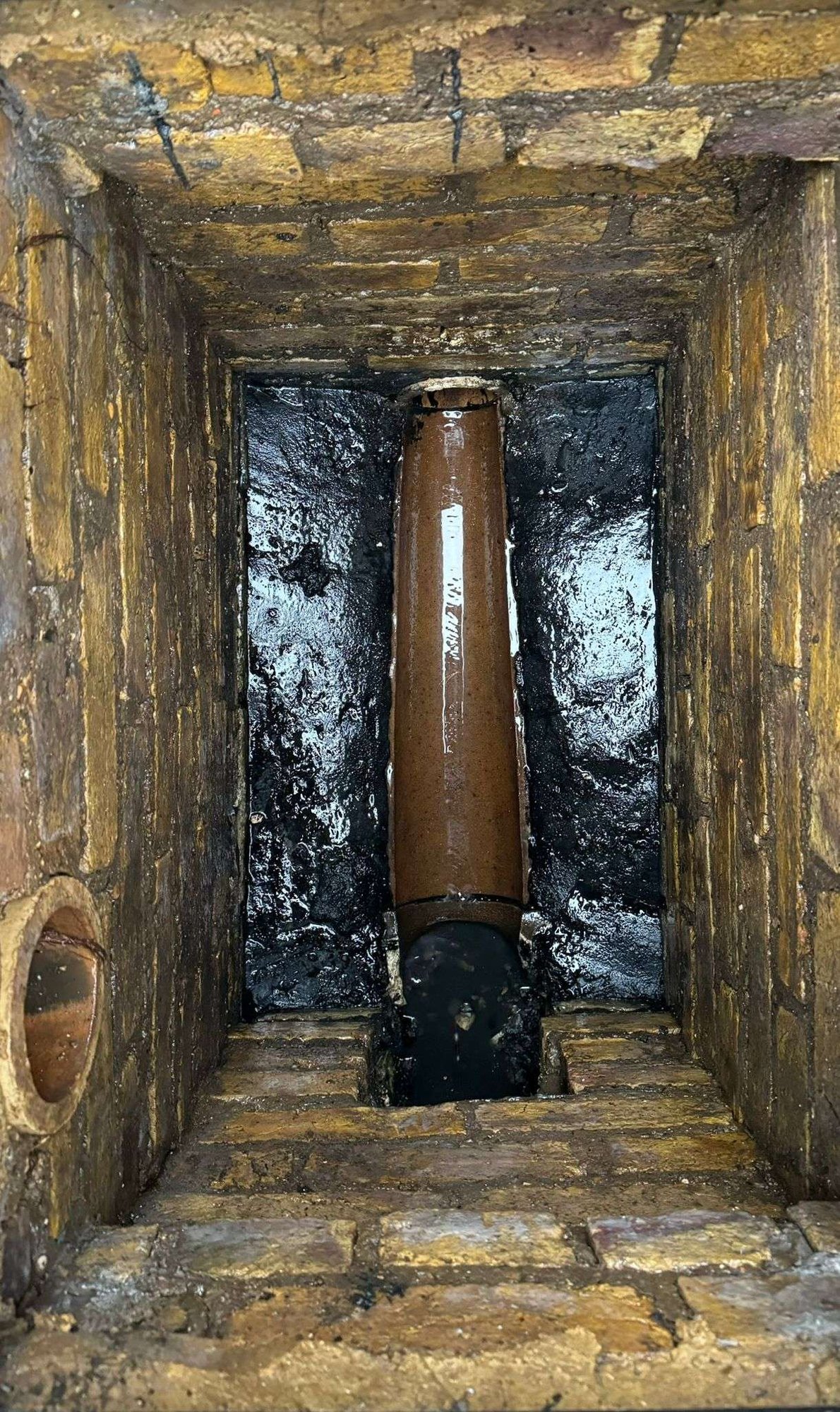We are always committed to providing effective drainage solutions that ensure the smooth operation of your plumbing systems. One common component in many older drainage systems is the Buchan trap, or interceptor. In this blog post, we will discuss why Buchan traps can be problematic, their impact on drainage efficiency, and our recommended solutions, including the use of CIPP lining with a ten-year guarantee.
Understanding Buchan Traps
Buchan traps were commonly installed in the 19th century to stop the flow of sewer gases due to the miasma theory of disease. For example, it was believed that the disease cholera was an airborne infection, not waterborne. The Buchan trap is normally found in the bottom of manholes or drop-shafts, as you can imagine this is an outdated system. However, their design poses several challenges:
- Old Design Limitations: The traditional design of Buchan traps often leads to difficulties in maintaining proper flow within the drainage system. They can quickly become overwhelmed, especially in households with high water usage or where improper materials are flushed or poured down the drain.
- Bottlenecks in the Drainage System: Over time, these traps can accumulate grease, silt, and debris, leading to blockages that restrict the flow of wastewater. This bottleneck effect means that the entire drainage system can become sluggish, resulting in slow draining sinks or toilets, unpleasant odours, and potential backups.
- Maintenance Hassles: Maintaining Buchan traps can be cumbersome and frequent, leading to rising costs and the need for regular professional interventions to clear blockages and perform cleanouts.



The Case for Removal and Reline
Given the ongoing problems associated with Buchan traps, we recommend removing these outdated systems altogether. Replacing them with modern solutions is vital (if problematic) for ensuring efficient drainage and long-lasting performance.
At Southampton Drains24, we utilise CIPP (Cured-In-Place Pipe) lining technology as an effective method for repairing and reinforcing your drainage system. This innovative technique allows us to reline your existing pipes without the need for disruptive excavation.
Benefits of CIPP Lining
- Non-Intrusive Method: CIPP lining involves inserting a resin-saturated felt liner into the existing pipe and curing it in place, creating a new, durable pipe within the old one. This means less disruption to your property.
- Long-Lasting Solution: Our CIPP liners provide a strong, seamless, and corrosion-resistant surface that can significantly extend the life of your drainage system.
- 10-Year Guarantee: We stand behind the quality of our work with a 10-year guarantee on our CIPP liners. This gives you peace of mind knowing that your drainage system is protected against future issues caused by aging infrastructure.
- Reduced Maintenance: By removing Buchan traps and replacing them with modern CIPP-lining solutions, you’ll likely experience fewer blockages and a more efficient drainage system, lowering the need for frequent maintenance.
Conclusion
Buchan traps may have been an effective solution in the past, but their outdated design can cause significant problems in modern drainage systems. At Southampton Drains24, we provide expert recommendations for removing these traps and replacing them with state-of-the-art CIPP lining solutions. Our commitment to quality and customer satisfaction ensures that your drainage issues are addressed effectively, and with our ten-year guarantee, you can trust that your system will operate smoothly for years to come.
If you are experiencing drainage issues related to Buchan traps or need assistance with your drainage system, contact us today for expert advice and tailored solutions!

